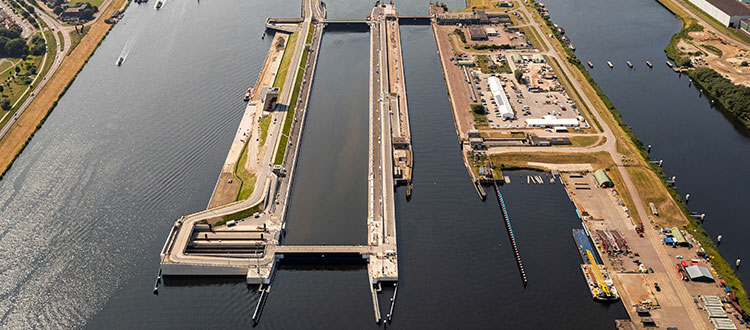
The largest maritime lock in the world was built in Amsterdam
Commissioned by the OpenIJ consortium, Buzzi Unicem through its Dutch subsidiary Dyckerhoff Basal, supplied over 300,000 m³ of ready-mix concrete for this large project, which is equivalent to 60 football fields covered with a layer of conglomerate one meter thick.
The concrete was produced by two mobile plants, installed directly on-site. All the raw materials needed for the concrete were delivered by ship or pontoon.
95% of the ready-mix concrete was supplied in the compressive strength class of C30/37 and consistencies of F4 or even F5. Concrete was used in various underwater areas of the lock and for the foundation of the sea-facing gate, which is 4 meters thick and located about 20 meters below sea level with respect to the hydrometry of Amsterdam.
Over 110,000 tons of cement necessary for preparing the concrete was produced at the Dyckerhoff Neuss and Neuwied cement plants located on the Rhine in Germany and, apart from the smaller quantities, was transported by barge to the mobile ready-mix concrete plants on-site.
The Neuss plant supplied the Dyckerhoff AQUADUR Doppel product (CEM III/B 42.5 N-LH/SR), while the Neuwied plant supplied the Dyckerhoff ECODUR product (CEM III/B 42.5 L-LH/SR). These blast furnace cements contain 35%-64% less Portland clinker, which is replaced with slag and therefore has a lower carbon footprint.
The new lock, which is 500 meters long, 70 meters wide and 18 meters deep, replaces the earlier Northern locks and will improve access to the port of Amsterdam, particularly for the next-generation container and cruise ships.

